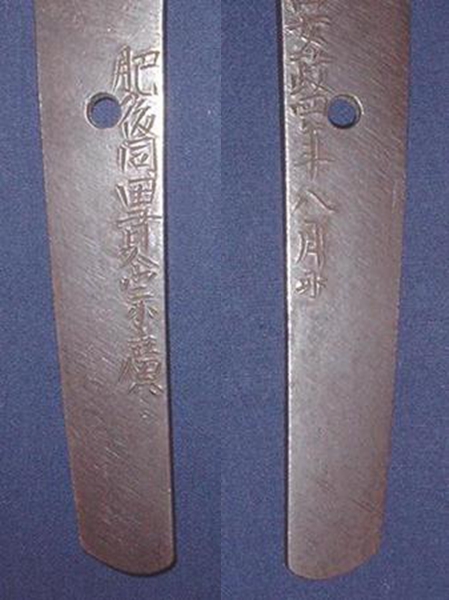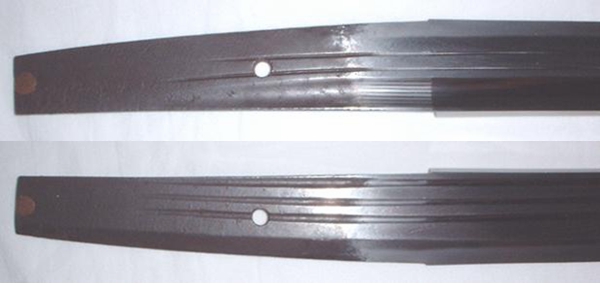By lyuesword | 30 December 2021 | 0 Comments
Appreciation of Several Famous Tanto swords
Usually tang has a signature of the maker. And sometimes the date or other things, prayer, owner's name, result of cutting test and etc. On the other hand, there is a tang originally no signature of the smith.
Generally tang condition is important on Japanese blades to see the age.
I understand such idea that wanting to remove rust and clean tang. But traditionally we respect the ageing of things in Japan. Please keep the tang condition, naturally ageing deserves to be appreciated.
Additionally, the rust is influenced also by the quality of the steel. Each steel has each colours also on its rust. Good steel creates black and dense rust, and poor steel does red and rough rust. We appreciate the rust condition on the tang as same as to iron tsuba.
When the rust condition on the tang is not natural, we can treat it as fake even if the signature is genuine.
12-13th century
Tanto "Shinsoku"

13-14th century
Tanto "Kuniyoshi" (Awataguchi school)

16th century
Tanto "Kanemichi"

"Seki ju Kanemichi saku" (made by Kanemichi, lives in Seki)
This is a very good rust condition that comes from good steel. The checked file pattern is a tradition of Seki school.
19th century
"Higo Dotanuki Munehiro"
"Ansei 4 nen Hachigatsu nichi" (1857 August)

On much shortened blades, the signature has been removed by the work.
This blade is shortened and filed to make new tang in 16th century.

Sometimes such blades have some kinds of letters on its tang.
A gold inlay of smith's name is maker's name that was done at the same time of shortening the blade, being sorry the signature disappears.
Names that written with lacquer are attributed name.
A red lacquer is on the original unsigned tang. A gold lacquer is on the shortened tang.
Want a unique sword? Feel free to contact us:
Email: lyuesword@hotmail.com
Website: www.lyuesword.com
Custom Sword Page: www.lyuesword.com/Custom-Sword/customization-options/Create-Your-Own-Swords
Generally tang condition is important on Japanese blades to see the age.
I understand such idea that wanting to remove rust and clean tang. But traditionally we respect the ageing of things in Japan. Please keep the tang condition, naturally ageing deserves to be appreciated.
Additionally, the rust is influenced also by the quality of the steel. Each steel has each colours also on its rust. Good steel creates black and dense rust, and poor steel does red and rough rust. We appreciate the rust condition on the tang as same as to iron tsuba.
When the rust condition on the tang is not natural, we can treat it as fake even if the signature is genuine.
12-13th century
Tanto "Shinsoku"

13-14th century
Tanto "Kuniyoshi" (Awataguchi school)

16th century
Tanto "Kanemichi"

"Seki ju Kanemichi saku" (made by Kanemichi, lives in Seki)
This is a very good rust condition that comes from good steel. The checked file pattern is a tradition of Seki school.
19th century
"Higo Dotanuki Munehiro"
"Ansei 4 nen Hachigatsu nichi" (1857 August)

On much shortened blades, the signature has been removed by the work.
This blade is shortened and filed to make new tang in 16th century.

Sometimes such blades have some kinds of letters on its tang.
A gold inlay of smith's name is maker's name that was done at the same time of shortening the blade, being sorry the signature disappears.
Names that written with lacquer are attributed name.
A red lacquer is on the original unsigned tang. A gold lacquer is on the shortened tang.
Want a unique sword? Feel free to contact us:
Email: lyuesword@hotmail.com
Website: www.lyuesword.com
Custom Sword Page: www.lyuesword.com/Custom-Sword/customization-options/Create-Your-Own-Swords
Leave a Reply
Your email address will not be published.Required fields are marked. *